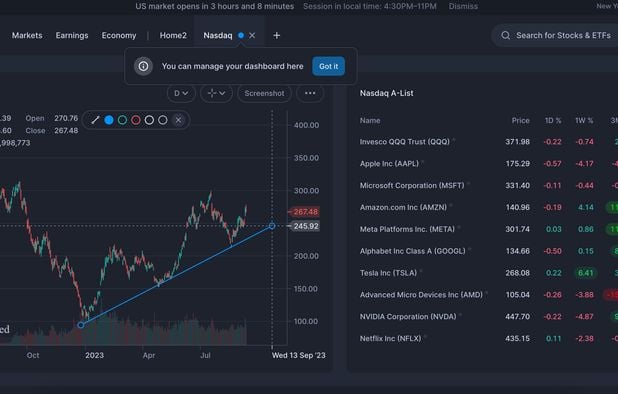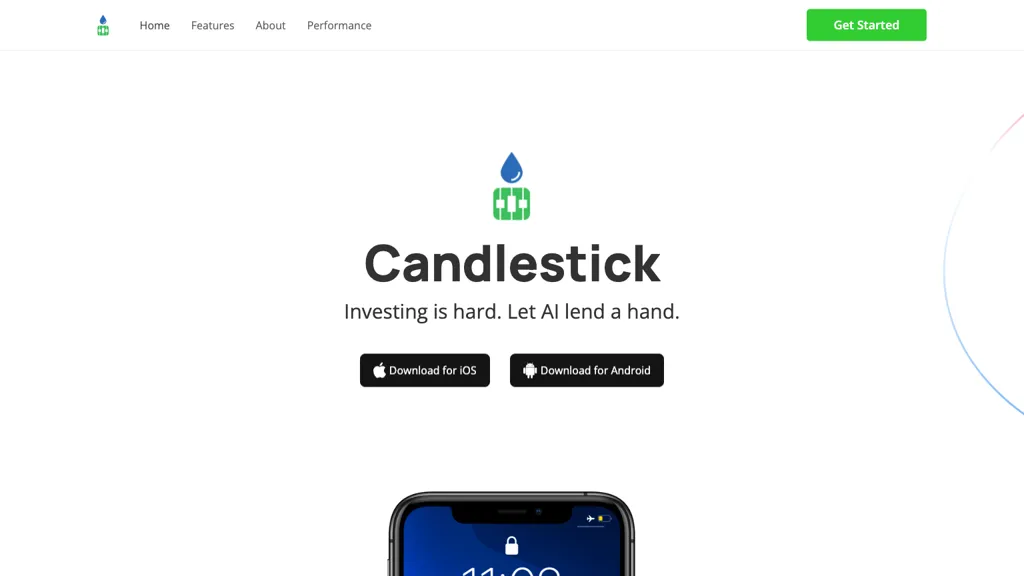20 Pro Reasons To Selecting AI Stock Predictions Platform Websites
20 Pro Reasons To Selecting AI Stock Predictions Platform Websites
Blog Article
Top 10 Tips For Assessing Data Quality And Sources Of Ai Trading Platforms Which Predict Or Analyze The Prices Of Stocks.
To provide accurate and reliable information It is crucial to examine the sources and data that are used by AI stock prediction and trading platforms. Poor data quality can cause inaccurate predictions, financial losses and mistrust of the platform. Here are the 10 best tips for evaluating the quality of data and sources:
1. Verify the data sources
Check the source of the data. Make sure the platform uses reliable and well-known data providers, such as Bloomberg, Reuters or Morningstar.
Transparency. The platform must publicly disclose the sources of data it uses and should be able to update them regularly.
Avoid dependence on a single source: Trustworthy platforms integrate data from multiple sources in order to reduce biases and errors.
2. Examine the freshness of data
Real-time data as opposed to. data delayed Find out if your platform offers delayed or real-time data. Real-time data is essential in order to facilitate trading, while delayed data is sufficient for analysis over the long term.
Verify the frequency of updating information (e.g. hourly minutes by minutes or even daily).
Consistency of historical data: Ensure that the data from the past is clear of any gaps or anomalies.
3. Evaluate Data Completeness
Look for missing information Look for tickers that are missing or financial statements, as well gaps in the historical data.
Coverage: Ensure the platform has a wide variety of markets, stocks indexes, and other equities that are relevant to the strategies you use for trading.
Corporate actions: Make sure that the platform accounts for stock splits, dividends, mergers and other corporate actions.
4. Test Data Accuracy
Cross-verify data : Compare the platform's data with those from other reliable sources to ensure the accuracy.
Error detection: Watch out for price errors, mismatched financial metrics or outliers.
Backtesting: Use historical data to backtest trading strategies and determine if the results align with the expectations.
5. Take a look at the data Granularity
Level of Detail: Make sure the platform is able to provide a full set of data, including intraday pricing quantity bidding-asking spreads, and order book depth.
Financial metrics: Verify that the platform provides comprehensive financial statements, such as statements of income, balance sheets, and cash flow, and also important ratios (such as P/E, ROE, and P/B. ).
6. Make sure that the data processing is checked and Cleaning
Normalization of data. Check that the platform is normalizing data to maintain consistency (e.g. by adjusting splits, dividends).
Outlier handling - Verify the way the platform handles anomalies and outliers.
Missing data imputation: Check to see if your platform uses reliable methods when filling in the missing data.
7. Verify data to determine if they are consistent.
Timezone alignment - Ensure that all data is aligned to the same local time zone to avoid discrepancies.
Format consistency: Make sure that the data has been presented consistently (e.g. currency, units).
Cross-market compatibility: Make sure that the data from exchanges and markets are harmonized.
8. Assess Data Relevance
Relevance for trading strategy - Be sure the data corresponds to your style of trading (e.g. quantitative modeling, quantitative analysis, technical analysis).
Selecting features: Make sure that the platform offers appropriate features that can improve predictions (e.g. sentiment analysis, macroeconomic indicator and news information).
Review Data Security Integrity
Data encryption: Check that the platform utilizes encryption to protect data when it is stored and transmitted.
Tamper-proofing: Make sure that the data isn't manipulated or modified by the platform.
Compliance: Check if the platform complies with laws on data protection (e.g., GDPR, CCPA).
10. Test the AI model of the platform transparency
Explainability - Make sure that the platform offers insights on the way in which the AI model makes use of the data in order to generate predictions.
Bias detection: Find out whether the platform monitors and corrects biases within the model or data.
Performance metrics: To determine the reliability and accuracy of predictions, examine the platform's performance metrics (e.g. accuracy, precision and recall).
Bonus Tips
User reviews and reputation User feedback and reviews to gauge the credibility of the platform as well as its data quality.
Trial period: You can try out the data quality and capabilities of a platform with the demo or trial before deciding to buy.
Support for customers - Check that the platform you choose to use is able to offer a robust customer support to resolve any data-related issues.
With these suggestions will help you evaluate the accuracy of data and the sources of AI stock prediction platforms to ensure you take an informed and trustworthy trading decision. Read the recommended inciteai.com AI stock app for website tips including ai chart analysis, ai stock market, ai stock trading bot free, ai chart analysis, chatgpt copyright, stock ai, best ai trading software, ai investment app, ai for trading, chart ai trading assistant and more.
Top 10 Tips For Evaluating The Effectiveness Of Ai Analysis And Stock Prediction Platforms
Scalability is a key factor in determining whether AI-driven platforms for stock prediction and trading can cope with the increasing demand of users, markets and data volumes. These are the top 10 ways to determine the scalability of AI-driven stock prediction and trading platforms.
1. Evaluate Data Handling Capacity
Tips: Determine if the platform has the ability to analyze and process huge databases.
What is the reason? Scalable platforms should be able handle growing volume of data without performance loss.
2. Test the Real-Time Processing Capabilities
Tip: Check the ability of the platform to handle real-time information streams, including live stock prices, or breaking stories.
Reason: Delays in trading decisions can result in missed opportunities.
3. Cloud Infrastructure and Elasticity: Check it out
Tip: Check whether the platform has the ability to dynamically scale resources and uses cloud infrastructure (e.g. AWS Cloud, Google Cloud, Azure).
The reason: Cloud platforms are elastic, and they can be scaled up or down in response to the requirements.
4. Algorithm Efficiency
Tip: Evaluate the computational efficacy of AI models (e.g., deep learning, reinforcement learning) that are used to make predictions.
Why: Complex algorithms can be resource-intensive, therefore optimizing them is crucial to scalability.
5. Learn about Parallel Processing and Distributed Computer Systems.
TIP: Make sure to check if the platform uses parallel processing frameworks or distributed computing frameworks.
What's the reason? These technologies provide faster data analysis and processing across multiple nodes.
6. Review API Integration and Interoperability
TIP : Make sure the platform is compatible with other APIs, like brokers and market data providers. APIs.
What's the reason? Seamless Integration makes sure that the platform can easily adapt to changes in data sources, trading environment as well as other aspects.
7. Analyze User Load Handling
To check the effectiveness of your platform, you can simulate high-traffic.
Why is that a platform that can scale should be able to keep up with performance as the number of users increases.
8. Assessment of Model Retraining and Adaptability
Tip: Check how frequently the AI model is retrained and with what efficiency.
The reason is that as markets change, models must be updated quickly to remain accurate.
9. Examine for fault tolerance and Redundancy
TIP: Make sure your system has failover and redundancy mechanisms to handle hardware or software malfunctions.
Why: Because downtime is costly in the trading industry, fault tolerance is crucial for the ability to scale.
10. Monitor Cost Efficiency
TIP: Take into consideration the cost of scaling up your platform. Consider cloud resources like storage for data and computing power.
The reason: Scalability shouldn't come at an unsustainable cost, so balancing performance and expense is critical.
Bonus Tip Future Proofing
Making sure that the platform can be able to accommodate emerging technology (e.g. advanced NLP, quantum computing) and regulatory changes.
You can evaluate the efficacy and scalability of AI trading and stock prediction systems by paying attention to this aspect. This will guarantee that they are efficient and robust, capable of growing. Check out the most popular ai for trading stocks for site examples including best ai penny stocks, stock trading ai, ai stock trader, ai for trading stocks, ai stock prediction, free ai tool for stock market india, ai options trading, ai tools for trading, chart ai trading, can ai predict stock market and more.